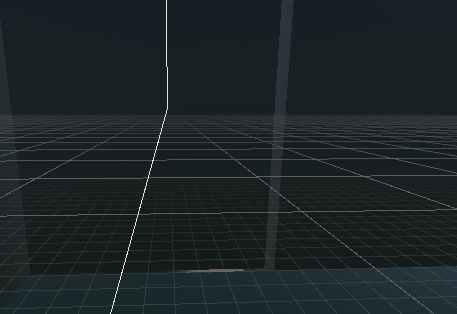Post Mortem - DnD Map v2
After the first playtest, everyone in the testing group agreed that we pulled our punches too much. Over the course of the hour of playtime, three maps ran to near completion, no player lost any health. I thought up a few ideas to resolve this, but for the most part I focused on adding additional fights and making the enemies I did have more threatening. I insured they'd be bulkier, harder to kill, and respond to damage in unnerving ways.
The hope would be that harder fights would result in more lost HP. I also took the time to place enemies in areas where they wouldn't be wasting turns walking through clear sightlines. Players picked up on this after they were ambushed once, using the light spell and arrows lit on fire to light up dark areas of the map to expose enemies lying in wait. Players enjoyed the use of puzzles and noncombat encounters, and the short path from the beginning to the boss was highlighted as a positive trait; there was a very rapid path from intro to fight. I shared my process for creating dungeons through node graphs.
Ex. A successfully solved puzzle. Players used a bag of rotten rations to distract a swarm of flesheating insects.
However, there's still an issue with runtime. Twenty minutes is hard to build for, and while we got further than we did before, we were still unable to create modules where players could run from start to finish in twenty minutes or less. Grant, a member of the playgroup, decided to include traps in his level in order to introduce peril while not relying on combat encounters, which are time consuming. While I have no metric for how long it takes, I think I have to assume that any one combat encounter could potentially take 3-5 minutes, or 20-25% of the total allotted playtime, and build around that.
For the final DnD map, I believe I know what lessons I need to take away from the previous two maps. I understand that players respond well to puzzles and noncombat encounters; players enjoy obtaining and using items, and most importantly they enjoy having the power to modify and change their environment to their benefit. As this is a cheap way of making them feel powerful without resorting to combat (which we've established is frequently long and unexciting without ways to make it feel special), I should include more puzzles and item-use in my next map.
Ex. Using handouts to avoid long descriptions, while keeping items. Players like using items, they don't like long descriptions. Win win.
I should limit combat encounters to things that feel special, relevant, and have immediate feedback to the players. DnD combat, especially in a simplified system, is about as exciting as drinking plain tap water. The presence of a heal spell is also a strike against combat; for the Mage, the heal spell has no consequences (the minimum a mage can roll is a 4; which results in no health loss). Lasting damage is impossible with a mage at the party, so all combat feels weightless if a mage is in the party. It must be lethal, relevant, with options to drastically shorten it using intelligent thinking and item use.
I need to keep the short, direct, structure. This is absolutely the strongest part of my first level design. The only reason why I was able to have combat encounters I could flesh out more than 'here's a spider! oh, here's two monsters!' is because my level is uncomplicated and direct structurally. Winding mazes and complicated pathways are unwelcome in such a short runtime. Ideally, I need distinct rooms with lots of interconnected pathways that allow for players to be exactly where they want to be in a short period of time.
While it's a shame to abandon the little story and plotline I've assembled in my DnD level, which I've gotten unreasonably attached to while fleshing out the map, I come out of it knowing basically what I want to include in future maps. I've learned how to use roll20 so that I can very quickly communicate ideas to players using journal entries, player-facing health bars, fog of war, and removable background objects and items. I've learned what works and what doesn't in a twenty minute play session, and I have full confidence that I can develop a level that finishes in twenty minutes using everything I've learned in the past two versions.






Comments
Post a Comment